Through the topic “Tien Giang Logistics Development,” the Vietnam Logistics Review (VLR) conducted an interview with the Vice Chairman of the People’s Committee of Tien Giang Province, Pham Van Trong, on related issues.
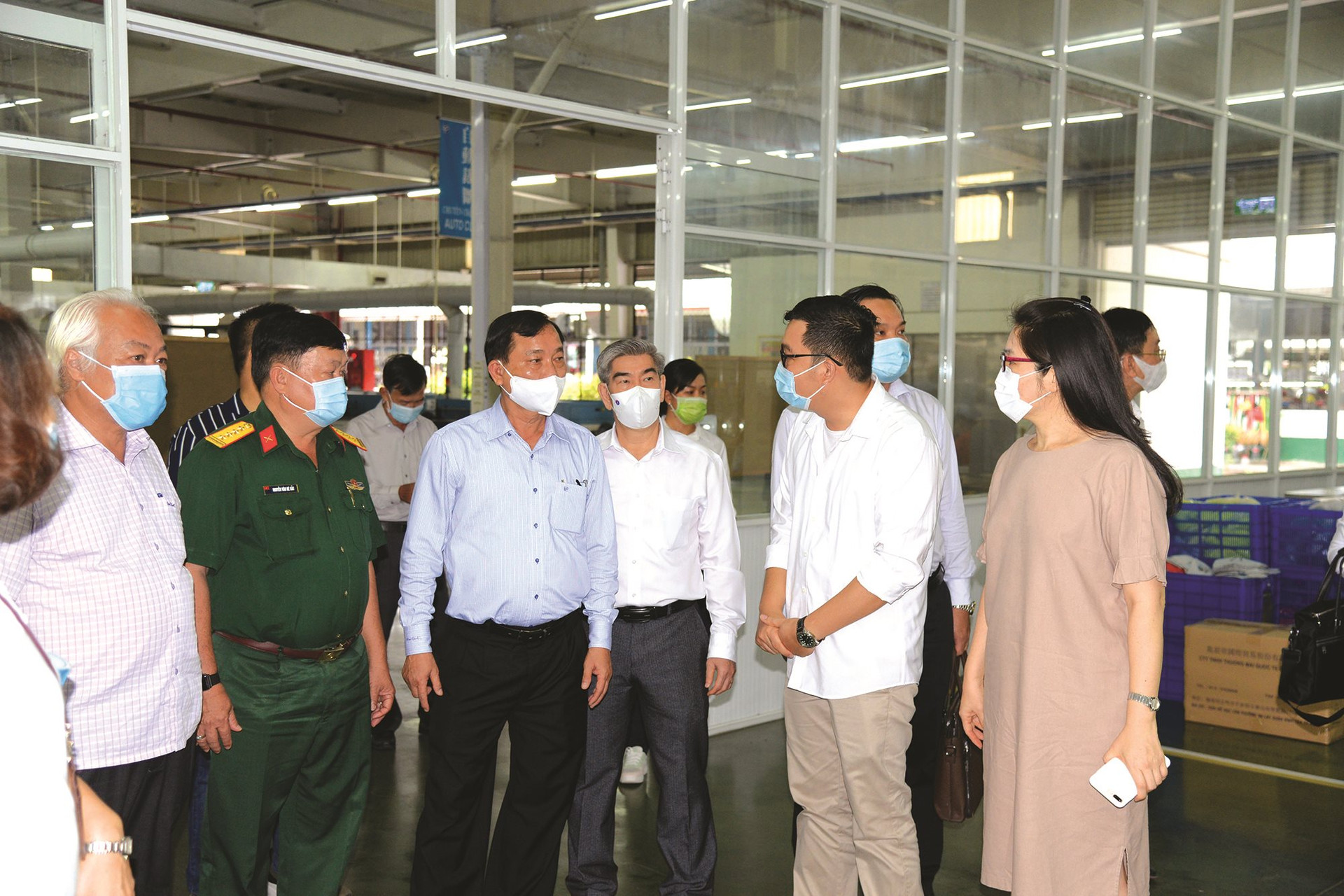
Sir, what special support policies does Tien Giang province currently have to attract both domestic and foreign businesses for investment and business activities in the locality?
Vice Chairman Pham Van Trong: To leverage the local advantages, in recent years, Tien Giang province has focused on improving the quality of planning and strategic vision, identifying a portfolio of projects to attract investment to the province. This helps businesses plan and engage in investment and business activities in Tien Giang with confidence. The province has achieved an average economic growth rate of 8.2% per year, higher than the average for the Mekong Delta region. This is largely due to the significant contributions of both domestic and foreign businesses investing in local production and business.
In 2022, businesses in industrial zones and clusters in Tien Giang province achieved positive results. FDI businesses generated revenue exceeding 3.99 billion USD, nearly 60% higher than the annual target. Domestic businesses achieved revenue of over 7,553 billion VND, reaching 100.71% of the annual target, while the export turnover exceeded 3.4 billion USD, surpassing the annual target by more than 48%. This resulted in employment opportunities for over 92,000 workers.
The People's Committee of Tien Giang province has established a project appraisal team for non-budget investment projects within the province. The team is responsible for reviewing and appraising projects within the province, forwarding them to relevant authorities for resolution as required. Additionally, the team addresses suggestions and resolves difficulties and obstacles to create favorable conditions for project implementation.
Furthermore, the provincial People's Committee has entrusted the Management Boards of Industrial Zones (IZs) in Tien Giang with regular monitoring of investment and production activities by investors in the IZs. This helps provide timely support and address difficulties and obstacles. The Department of Planning and Investment collaborates to advise the provincial People's Committee on budget allocation to improve infrastructure connecting various IZs, creating favorable conditions for investment attraction.

The province has also proposed to the Prime Minister to adjust the land allocation target for Tien Giang's IZs in the 2021-2025 land use plan to 2,076 hectares and 4,429 hectares by 2030. Additionally, it urgently coordinates with central ministries and agencies to recommend transferring the Soai Rap Petroleum Service Industrial Zone under provincial management to continue attracting investment.
The Management Boards of Industrial Zones in Tien Giang regularly monitor and grasp the situation, take the lead in coordinating with relevant units to provide guidance and resolve emerging issues related to investment and business activities of investors in IZs. They report to and advise the provincial People's Committee on matters beyond their authority, actively coordinate with departments, sectors, and localities in building and implementing inspection and examination plans to avoid overlapping and create favorable conditions for investment and business activities of investors.
In monitoring and evaluating foreign investment projects, the Management Boards of Industrial Zones in Tien Giang guide investors to ensure compliance with legal regulations on investment, construction, environment, labor, and related laws. They also provide input during the assessment of project proposal documents by investors, ensuring legal compliance and suitability as the basis for investment approval decisions in IZs.
In which sectors is Tien Giang province currently creating conditions and promoting development opportunities?
Vice Chairman Pham Van Trong: In recent years, Tien Giang continues to invest in improving infrastructure in industrial clusters and zones as a foundation for attracting secondary investors. The province also has many policies to vigorously attract and incentivize investment in its key economic sectors.
The province's goal is to attract investment projects in agro-processing industries (agriculture, forestry, and aquaculture) and high-tech industries with low labor intensity, reduce outsourcing projects, and actively invite investment in high-tech agricultural projects, high-tech aquaculture, and industries that produce high-value industrial products using advanced technology. These projects are designed to generate significant added value and be competitive in both domestic and international markets.
Tien Giang province also actively seeks investment from major economic groups in countries such as the United States, South Korea, and Japan. Additionally, the province encourages industrial facilities to modernize their production technology and firmly refuses industries with a high potential for environmental pollution, contributing to the sustainable development goals of Vietnam and our international commitments.
In your opinion, what are the key highlights that make Tien Giang an attractive destination for investors in the logistics and supply chain services sector?
Vice Chairman Pham Van Trong: Tien Giang is a province with significant potential, strengths, and ample room for development. The Resolution of the 11th Provincial Party Congress of Tien Giang for the 2020-2025 term identifies three strategic breakthrough stages, with logistics-related aspects present in all three stages.
To develop logistics, the People's Committee of Tien Giang province has prioritized building infrastructure, with a focus on comprehensive and seamless transportation infrastructure connecting different regions within the province and the Mekong Delta region. In reality, Tien Giang's transportation infrastructure is becoming increasingly modern, integrated, and efficient.
During the period from 2016 to 2020, the province's transportation system saw substantial develo
pment with the construction of several crucial transportation routes. Currently, important projects such as Rach Mieu 2 Bridge and My Thuan 2 Bridge, which connect to the Ho Chi Minh City - Trung Luong - My Tho - Can Tho expressway, are being directed and expedited by the government. In terms of inland waterway transportation, Tien Giang has key canals like Cho Gao and Thap Muoi No. 2 (Nguyen Van Tiep canal), which serve as vital arterial routes for cargo transportation between the Mekong Delta and Ho Chi Minh City. These ca

nals have been dredged and expanded to meet waterway transport needs and harness the province's strengths.
With 32 kilometers of coastline, Tien Giang is also investing in various projects to develop its maritime economy and international maritime trade connections. Therefore, Tien Giang is not only investing in and improving its road transportation infrastructure but also paying attention to the planning of seaports and inland waterway transportation. In the future, the My Tho seaport will be invested in to increase its capacity to accommodate ships up to 5,000 DWT (deadweight tons).
Furthermore, Tien Giang's development is not just for the province itself but also for the benefit of the entire country, particularly the neighboring provinces and cities in the key economic region of the Mekong Delta. Hence, the province's strategy, planning, and investment attraction efforts also demonstrate a regional vision and collaboration to foster collective development.
In the direction of administrative reform and streamlining, what measures has Tien Giang province implemented to reduce administrative procedures and create favorable conditions for investors?
Vice Chairman Pham Van Trong: As I mentioned earlier, the success in attracting investment in recent years in Tien Giang is the result of a combination of various factors, including administrative procedure reform.
Starting from January 7, 2022, the People's Committee issued Decision No. 45/QD-UBND on the plan to implement the tasks of controlling administrative procedures, the one-stop mechanism, and inter-agency coordination in handling administrative procedures in the province.
In implementing these tasks, the Management Boards of Industrial Zones in Tien Giang have been providing administrative services in areas related to investment, labor, construction, and other related support services to investors, ensuring that 100% of administrative procedure files are processed in a one-stop and timely manner. The provided services meet the requirements of investors throughout their investment and business activities in industrial zones.
From the beginning of 2023 until now, the Tien Giang Provincial Management Boards have continued to review and simplify administrative procedures, with a focus on enhancing the use of information technology and digital transformation. These efforts aim to reduce processing time and costs and minimize inconveniences for businesses.
Additionally, the province of Tien Giang has effectively implemented a quality management system according to Vietnam's ISO 9001:2015 standard. It offers online public services to maximize convenience for businesses. The province also promptly disseminates and provides complete, transparent information about legal regulations related to investment, land, planning, construction, business, labor, the environment, and other relevant areas to businesses in need.
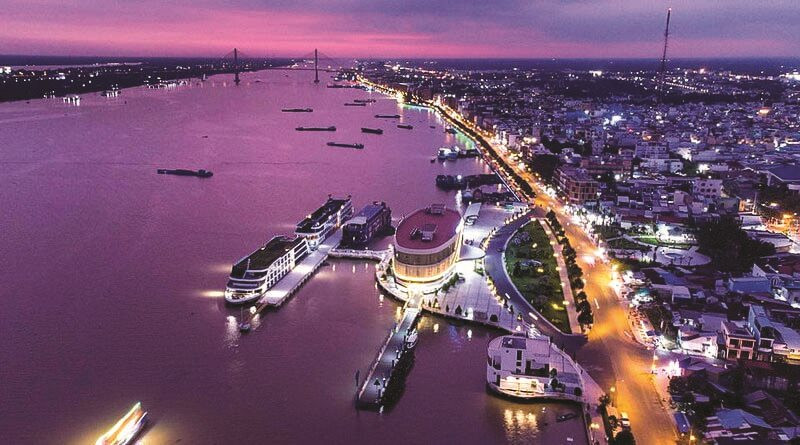
Currently, do the human resources and local training cooperation resources in the province meet the economic development needs of Tien Giang?
Vice Chairman Pham Van Trong: Tien Giang has a workforce of over 1.3 million laborers, which is of relatively good quality. Over 47% of the workforce has received formal training, and these workers display strong work ethics, adapt quickly to industrial practices, and meet the requirements of modern production.
To address the local workforce needs, the Tien Giang Provincial Party Committee has focused on implementing Resolution No. 29-NQ/TW dated November 17, 2022, of the Central Committee VI (Term XIII) on "Continuing to Promote Industrialization and Modernization of the Country by 2030, with a Vision Towards 2045."
Currently, Tien Giang has a university, Tien Giang University, with the mission of training a high-level, research-oriented workforce to meet the sustainable development needs of the province, the Mekong Delta region, and the entire country. The university actively collaborates with over 20 agencies and businesses both within and outside Tien Giang province to successfully conduct research, much of which is technology and knowledge transfer benefiting the community.
In the period from 2021 to 2025, the province has set a goal of supporting vocational training and professional education for students at vocational colleges and specialized high schools. This helps create a labor supply that serves the labor market and provides favorable conditions for job seekers to find stable employment that aligns with their skills and preferences.
However, it is worth noting that high-quality human resources remain a challenge in Tien Giang. We are aware that with the foundation of digital technology, which integrates all information about technology, processes, production methods, industry needs, skills, and most importantly, the ability to connect and share globally through technology devices, it will change the way supply and demand connect in the labor market. Therefore, Tien Giang has been diversifying training methods, from on-site training to collaborative training efforts.


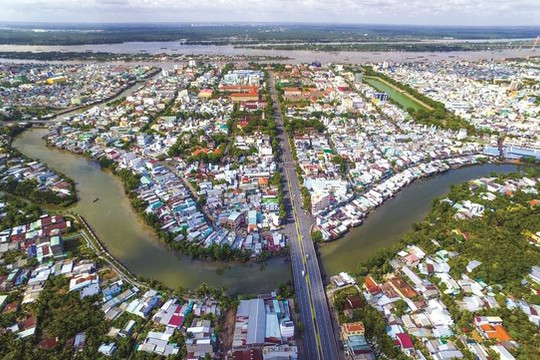
.png)
.png)
.png)


.png)
.png)


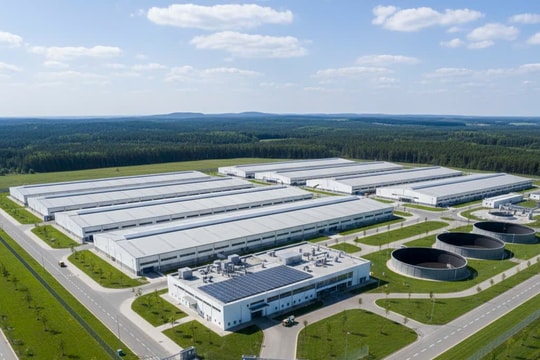


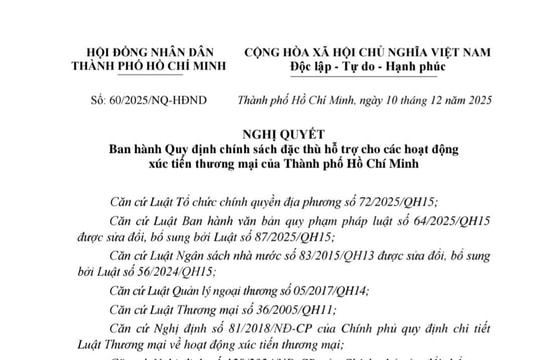
.png)

